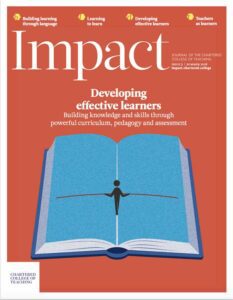Developing dispositions
Written by: Hanna Miller

7 min read
In sport, we often refer to what is known as a ‘challenge vs threat’ state: the idea that performers need to feel they have the knowledge, resources and external support to take on the challenges that face them. Similarly in a classroom context, each time a student walks into a class, they make a judgement as to whether they should attempt a task, based on their perceived level of capability (Jones M McCarthy et al., 2009). The goal within the 14 schools that form our trust is to shift as many students as possible from the ‘What’s the point of me even trying?’ or ‘I can’t do that’ mindsets towards the ‘Yes, I’ll give that a go’ mindset. In order to do this in a persuasive and relevant way for students at a primary and secondary level, we have engaged with the work of Costa and Kallick (Costa and Kallick, 2006) on the ‘habits of mind’ (Figure 1), with habits of mind defined as ‘the characteristics of what intelligent people do when they are confronted with pr
Join us or sign in now to view the rest of this page
You're viewing this site as a guest, which only allows you to view a limited amount of content.
To view this page and get access to all our resources, join the Chartered College of Teaching (it's free for trainee teachers and half price for ECTs) or log in if you're already a member.
This article was published in February 2018 and reflects the terminology and understanding of research and evidence in use at the time. Some terms and conclusions may no longer align with current standards. We encourage readers to approach the content with an understanding of this context.
0
0
votes
Please Rate this content
Subscribe
Please login to comment
0 Comments
Oldest
Newest
Most Voted
Inline Feedbacks
View all comments










